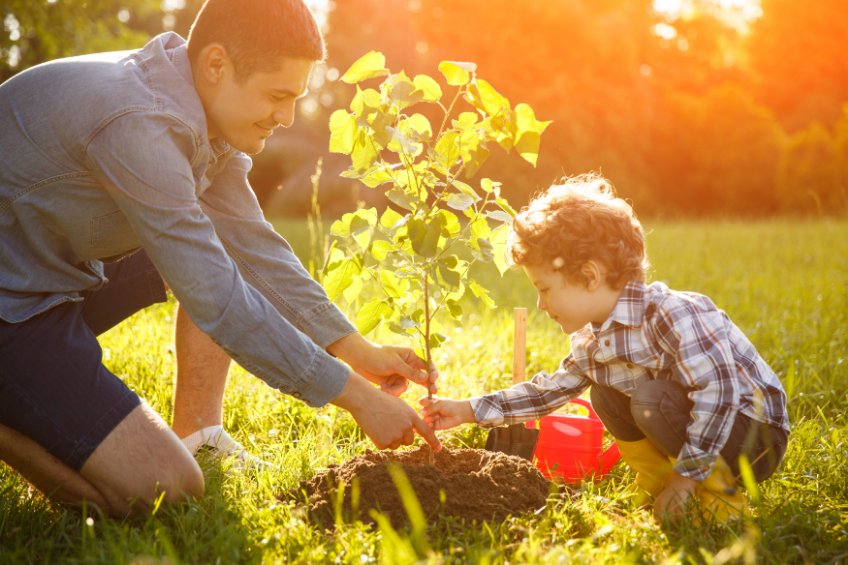
Start a healthy tree off right by planting it properly. Planting a tree during the summer months can be a little tricky, but with these tips, you can ensure it thrives. During these stifling, hot months in Utah, a new tree needs a little extra TLC, but its roots can grow quickly during the summer proving you don’t always have to wait until fall to plant.
Bareroot trees experience more stress during planting, especially in the summer months. Bareroot planting means the soil surrounding the roots has been washed off prior to planting, exposing the root ball. This is common if you’re shopping online because the plants weigh much less and are easier to ship, however it’s best done between the fall and spring when the plant or tree is dormant. In the summer, make sure you get a potted tree and plant it in its own soil to maximize water retention from the beginning. If you can’t get to planting the tree right away, make sure you’re watering it well every day in the pot until you can get it in the ground.
Utah’s representative state soil according to NRCS is called Mivida, which consists of mostly sand and small amounts of silt and clay. However, soil types vary greatly throughout the valley. Clay soils hold moisture well while sandy soils may be easier to work with but causes plant stress in dry, hot months due to lack of water retention. Most people’s yards have soil that is fairly neutral on the pH scale. If you want to check the balance of your soil, the Utah State University Extension office can help. Whatever the soil type is in your yard, a good environment for your tree is loose, fertile, and well-draining soil with some decomposing organic matter. Plant the tree deeply and keep the surrounding soil light and loose. This helps the roots get enough oxygen and water to flourish.
We are all trying to save water in Utah this summer, but if you’re planting a tree, you need to water it often. Be sure you know the watering needs of your new tree because overwatering can be just as dangerous as underwatering. If you notice the leaves curling upwards and turning brown, it needs some water. If your leaves are looking droopy and seem too heavy for the branch, it’s probably getting too much water. A good rule of thumb is to soak the new plant every few days rather than giving it a small amount every day. Deep waterings encourage the roots to grow down, whereas small shallow waterings keep the roots closer to the surface.
Mulch is a great resource for almost every plant, including trees new and old. It helps insulate the soil, provides a buffer from temperature swings, limits weed growth, and helps retain water. Apply about two to four inches around your newly planted tree for best results.
For all tree-related questions, Timber Ridge Tree Service is here to help.